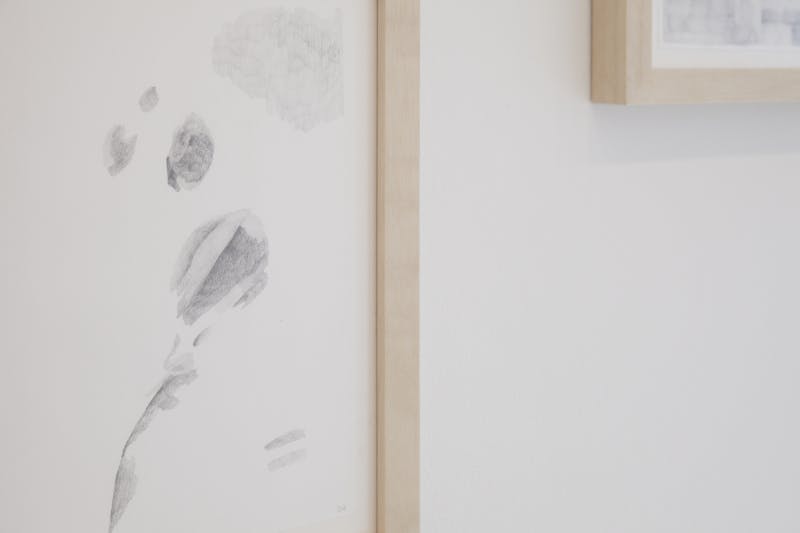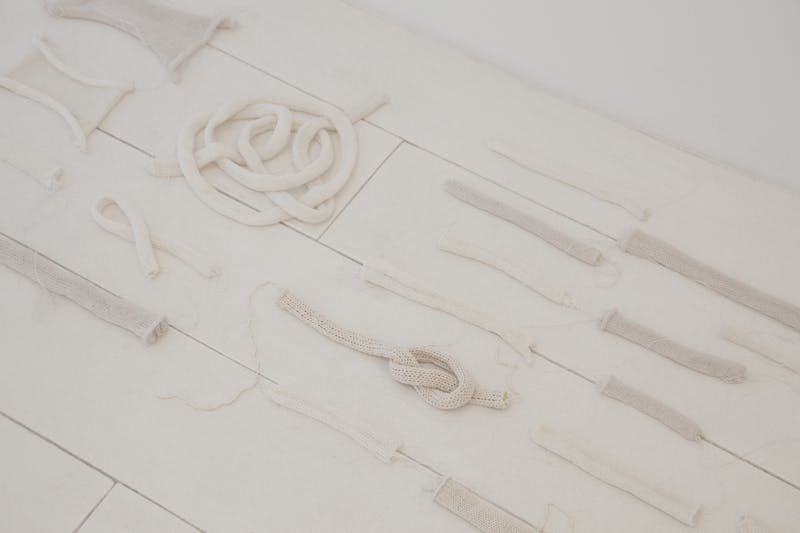In a tiny
gallery on Henry Street last week, the young artist Chang Yuchen taught me one
of her father’s drawing lessons: “There is no line in the real world.” A
subzero wind blew outside as she held up two fingers pressed together. You see a line between them, she explained, but that’s an illusion: It’s really just the place where two
forms meet, and that’s what the artist must remember as they draw. We think of drawing as a means of merely depicting the visible world, and
the “line” as a neutral tool in that process. But drawing is a technology that
has a generative force all its own, and like all technologies it is soaked in
ideology.
In Chang’s case, the technology came down from her father, who had been trained in the Chistyakov system at Beijing’s Central Academy of Fine Arts (CAFA). As a child, he had stumbled across a banned book of Tang poetry. “He was so drawn to the imagery of traditional Chinese literature,” Chang told me, “but he couldn’t practice Chinese traditional painting, because it was considered anti-Revolutionary back then.” Instead, he was trained in a strict new pedagogical system, imported from Russia.
Before the Revolution of 1949, fine art in China was dominated by ink painting, particularly in the sensitive literati style (wenrenhua). But the new communist government of the People’s Republic of China condemned ink painting as “feudal,” and instead encouraged a new national art form in the socialist realist style, similar to the kind of painting being produced in the Soviet Union. Mao Zedong named CAFA himself. In 1955, the Russian oil painter Konstantin Maksimov arrived at the prestigious art school, sent as a kind of cultural ambassador by his government. Maksimov, a Stalin Prize winner, immediately found great popularity among the CAFA faculty. He organized a two-year postgraduate course in oil painting, which burgeoned into a wave of influence that effectively institutionalized his style there.

One of Maksimov’s most enduring legacies was his introduction of the drawing system designed by Pavel Chistyakov. A nineteenth-century educator, Chistyakov emphasized a technique that requires the student to break down what they see into planes, practicing over and over again until the artist is capable of producing a three-dimensional effect on the canvas. Chistyakov’s own paintings had an expressive texture. His figures leap brightly from the canvas, and you can see in them the seeds of socialist realism: the faithfulness to life, the romanticized activity.
But like wenrenhua, Russian influence in Chinese art was formally suppressed following the Sino-Soviet split during the Cold War. The artist Cai Guo-Qiang, who maintains an extensive collection of Maksimov-alia, has spoken about how this erasure occurred in many areas of Chinese life: “Maksimov’s may have been a story in the arts, but stories like this happened in other fields: economics, architecture, military, in everything.” The Soviet influence in Chinese fine art lives on, officially unacknowledged, in the drawings themselves, like an effaced layer in a palimpsest.
In investigating her inherited drawing style, Chang Yuchen has infused her show with the theme of memory: what has been repressed at the collective level, what is remembered from childhood, and what can be done with that peculiar legacy.

Chang grew up a talented draughtswoman under her father’s instruction, and eventually attended CAFA herself. “From maybe the age of 6 to 22 I used pencil against paper,” she said. “I am so good at sharpening.” When Chang was growing up, she said, she wasn’t aware of the ideology behind the technique she was learning, only that it “was the only way I had to be trained, in order to become an artist and do what I want to do.” When she came to Chicago for graduate school in 2011, she realized that kids in America had been exposed to many more styles. The main drawback to the conventional training she received, she said, was “that there were no other options.”
Her exposure to Maoist ideology was akin to an American driving a Lincoln Continental in 1956: The car was designed by an engineer not a politician, but it came to symbolize the postwar era of flourishing capitalism. For Chang, the drawing system is like that car—a neutral technology overloaded with historical meaning. Whether it can ever be separated from ideology—whether Chistyakovian drawing can be pulled away from the era of Chinese socialist realist art—is the question that animates her new exhibition. Two Fingers Make a Line, which features drawing, embroidery, and textile work, dives deep into the history and philosophy of the pencil to look for the answer.
Chang is almost loving in her dedication to exploring the drawn line. In small pencil works on paper, she did not set out to draw anything in particular, but instead followed the instinct of her own hand’s muscle memory when it holds a pencil. Through abstract forms built of repetitive strokes, Chang transforms the line into a kind of flowing material that represents textures, shadows, and form. She holds true to the lesson of two fingers make a line, rejecting the kind of line that runs from A to B, but she repurposes the lesson to make an abstract work rather than a realist one.

On the floor of the gallery lies a selection of knitted objects, some of which loop into themselves to create loose knots. In each of these pieces, the yarn represents a single “line” that has been turned into something totally new—a complex, tangled, three-dimensional kind of “drawing.” Like the pencil-on-paper drawings, these artworks are so abstract that the relationship between drawing and socialist realism has been totally erased. The focus, instead, becomes the technology at play—in this case, textiles.
A few of the pieces have a more literal relationship to the “real world.” In one corner, some gauzy, purple pieces of silk hang over a horizontal string, shot through with sewn “drawings” of silver thread. She was inspired by rain, she told me, the way that it seems to fall in streaks when really it is composed of many tiny, single droplets. Some of the sewing looks like pine needles, which themselves resemble humble pencil strokes. As “lines,” a pine tree’s needles are the opposite of an “outline.” They do not mark the edge of the tree, the way that a Chistyakov-model diagram would. So Chang’s sewn drawings represent a philosophical inversion of the old Russian system—a destruction of that technology to produce a new and beautiful work.
Chang had no idea about the political history of the Chistyakov system when she was growing up, she said. And that “political history does not erase the pleasure I take from it.” Her commitment to the medium is not an endorsement of the lack of options that Chinese students have been given over the last half-century. It’s a deeply introspective engagement with a medium that has always made her happy. Chang’s achievement lies in reanimating the political history of the pencil while producing delicate, fascinating artworks that exist in the moment. A line is an instantaneous thing, she seems to say. It has no past or future.
